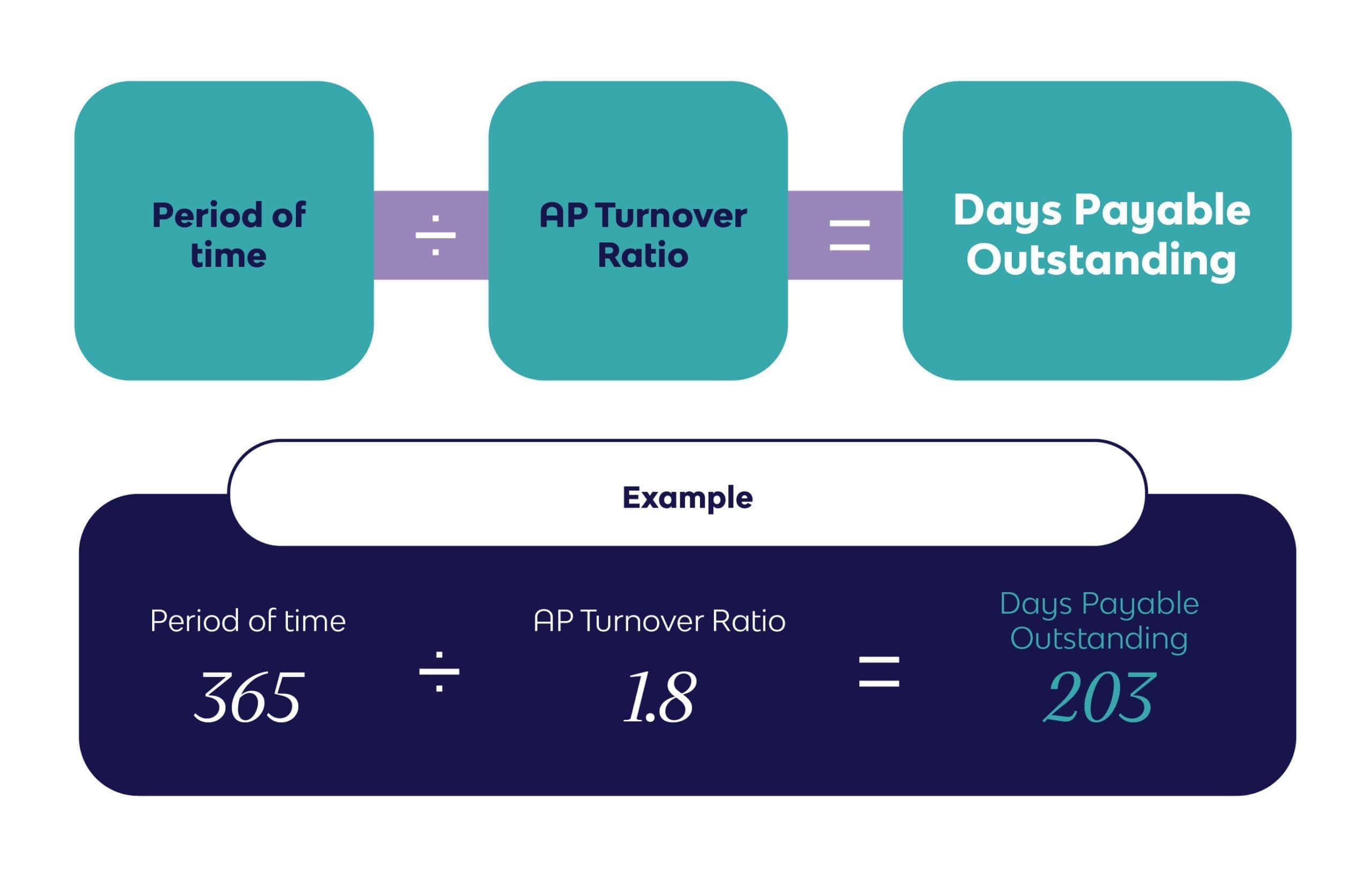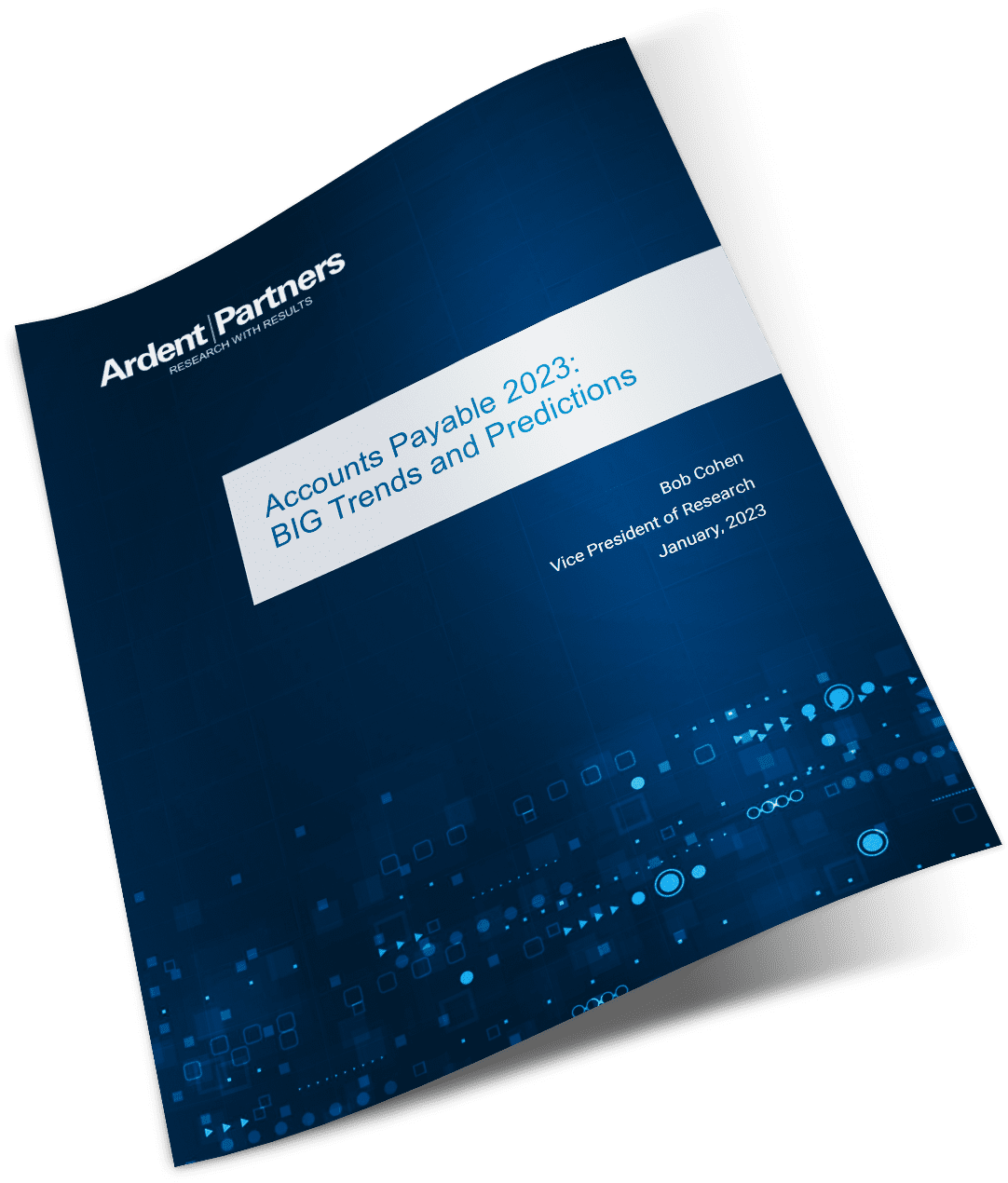How to Calculate and Improve Your AP Turnover Ratio
Home - How to Calculate and Improve Your AP Turnover Ratio
Corcentric

How to improve your AP turnover ratio and strengthen your relationship with suppliers
We all strive to have healthy relationships, and for a company, how good or bad a relationship is with its suppliers is dependent on how financially healthy the business is. In an economic environment where suppliers are in power to decide whom they want to do business with, it is critical to maintain a strong supplier relationship. And to achieve this, AP must ensure that invoices are paid in a timely and accurate fashion.
An accounting metric that is often ignored but can provide a vital glimpse into how your company measures up financially is the accounts payable (AP) turnover ratio.
Definition of accounts payable turnover ratio
AP turnover ratio is a type of financial ratio that essentially gauges how often a company pays its suppliers by considering the total cost of goods sold over a certain period, usually a month or a year. The KPI only measures your company’s accounts payable, which represents the money you owe to vendors and appears on your company’s balance sheet as a current liability (a short-term debt).
AP turnover ratio is an indicator of a business’s short-term liquidity (i.e., cash flow), meaning it’s a calculation of the company’s ability to pay its short-term debts. The higher the accounts payable turnover ratio, the quicker the business pays off its debt.
Traditionally, accounts payable has not been regarded as a valuable, expansive part of a business, so something like AP turnover ratio is not regularly calculated, let alone even on a company’s radar. However, more and more companies are investing in software and resources in order to optimize the accounts payable function, which in turn improves AP turnover ratio.
How to calculate accounts payable turnover
Get your calculators ready because it’s time for a quick math lesson.
As previously mentioned, accounts payable turnover ratio is a liquidity ratio. It shows how well a company can pay off its accounts payable by comparing net credit purchases to the average accounts payable.
That being said, here is a basic formula for AP turnover ratio:
Total net credit purchases from all suppliers during the period ÷ Average accounts payable for the period
If your company uses accounts payable software, the total credit purchases are something that can be automatically generated. If not, purchases can be calculated by subtracting the starting inventory from the ending inventory and adding that to the cost of sales.
You can calculate the average accounts payable for the specific period by referencing your financial statement. Simply add the beginning and ending accounts payable balances for the period and divide them by two.
Here’s a quick example of calculating AP turnover ratio:
Let’s say your company’s total net credit purchases for the year were $200,000, and your average accounts payable for the year was $110,000.

That means 1.8 is your accounts payable turnover ratio. In other words, your business pays its accounts payable at a rate of 1.8 times per year.
Understanding turnover ratio formula
You’re probably thinking: is 1.8 good or bad? Unfortunately, it’s not a black-and-white situation. It would be ideal to compare this ratio to previous ones as well as to the ratios of other companies of similar size and industry. However, you can gain additional insight by calculating the average number of days payable outstanding with the following formula:
Period of time ÷ AP turnover ratio = Days payable outstanding (DPO)

Typically, taking 203 days to pay suppliers is slow and not a great indication of a company’s financial condition. Vendors would most likely not be willing to keep extending credit to this company unless the creditor’s turnover ratio is increased, which would decrease the number of days it takes this company to pay off its debts.

Check out what’s in store for Accounts Payable in 2023
High vs. low: What is considered a normal turnover ratio?
In general, a high accounts payable turnover ratio reveals that a company is paying its suppliers quickly, and a low ratio shows that a business is slower at paying its bills. If a company’s ratio is declining, it could result in the business not being able to adhere to the average credit payment terms and receiving a lower line of credit.
High AP turnover ratio
A high AP turnover ratio shows suppliers and creditors that the company has the working capital to pay its bills frequently and can be used to negotiate favorable credit terms in the future. Essentially, a high accounts payable turnover ratio indicates high creditworthiness. Keep in mind that a high AP turnover ratio isn’t always positive. If the ratio is high and continues to climb over time, this could mean that a company isn’t properly managing its cash flow.
Low AP turnover ratio
A low AP turnover ratio is not ideal. It could signal that a company is struggling to pay its bills. When vendors are conducting a financial analysis of a company, a low ratio could deter them from extending lines of credit.
Normal AP turnover ratio
Whether or not a company is in a good spot when it comes to its AP turnover ratio is somewhat relative. As with all ratios, this metric varies across different industries and requires benchmarking with similar companies to gauge how your company is performing. Also, conducting a complete financial analysis will show how your accounts payable turnover ratio impacts other metrics in your business and reveal just how healthy it is.
How are companies managing accounts payable turnover ratio?
Whether a company has a high accounts payable turnover or a low one, the fact that the business is calculating this metric in the first place is a step in the right direction. As mentioned, you can convert AP turnover ratio to the number of days payable outstanding (DPO) to gain clarity and manage your ratio more effectively. Companies use different periods of time to compute days payable outstanding; for example, some might use 365 days, and others might plug in 30 days to the formula.
When determining total supplier purchases for the AP turnover ratio formula, some companies only include the purchases that impact the cost of goods sold (COGS). This is generally not recommended as it will result in an incorrect and very high accounts payable turnover ratio.
Managing AP turnover ratio is a delicate dance. Some businesses pay creditors too fast, leaving them with insufficient funds to cover other bills, while others unnecessarily miss payments and damage relationships with suppliers. The key is to keep an eye on the ratio to optimize cash flow.
Do my current liabilities impact my AP turnover ratio?
Your current liabilities will always impact AP turnover ratio. Remember, you need your average accounts payable to calculate AP turnover ratio. Your average accounts payable balance is found in the current liabilities section of your company’s financial statements by adding the beginning and end of year accounts payable balances and dividing that by two. Accounts payable (your current liabilities) vary throughout the year, so calculating the average AP will result in a more accurate turnover ratio.
The importance of a high AP turnover ratio
Having a high AP turnover ratio sends a clear message to vendors that your company is in good financial condition and can make on-time payments for purchases made on credit. A high turnover ratio can oftentimes be used to negotiate favorable credit terms and allows a company to take advantage of early payment discounts.
Achieving a high AP turnover ratio is possible, and a company can work with a reputable payment processing company like Corcentric to get its ratio where it wants it to be.
Tips for improving your AP turnover ratio
Improving your AP turnover ratio is crucial to managing cash flow and ensuring that your company is financially healthy. Luckily, there are software and services that can help identify any issues with cash flow management and streamline payments.
Investing in an accounts payable automation solution with electronic purchase orders, payables automation, automated three-way match, and automated B2B payments means faster and cheaper invoice processing, greater compliance, fewer disputes, and better supplier relationships. All of this leads to a better AP turnover ratio.
Automation technology allows finance departments to control payables more effectively and provides real-time visibility into liabilities. By gaining insight into days payable outstanding, AP can define better payment timeframes and capture supplier discounts.
Corcentric’s accounts payables automation solution can give your company greater control over cash flow and working capital.
Stay ahead of the curve
Maintaining good supplier relationships, supply chain financing, working capital management, automation, and hyperautomation, are just some of the trends that will be influencing Accounts Payable this year and in the years to come.
Read Ardent Partners’ Accounts Payable 2023: BIG Trends and Predictions to gain actionable insights on how you can stay ahead of the AP curve. Read now
Get started today, Contact Us.